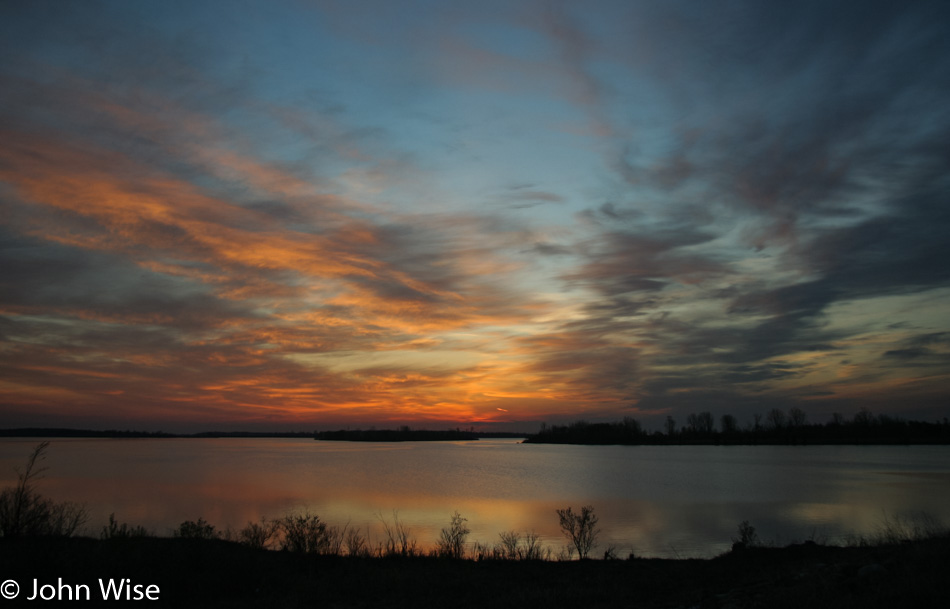
Who asks for a 4:30 wake-up call while on vacation? The kind of people who want to be outside their room by 5:15, that’s who. Why would anyone want to be up and gone by the break of dawn? Because there is no other way to witness this kind of sky. How many times will anyone have the opportunity to see such sights with their own eyes?

What are the subconscious influences that determine why particular routes are chosen over others? As I look at the map of the area, there’s a part of me that thinks that maybe we should have hugged the St. Lawrence River, but our primary place of interest wasn’t that waterway but getting over to Maine. But why Maine? To some degree of awareness, I vaguely know that the idea of the state holds some kind of romantic intrigue. I don’t know why this is in the back of my mind, and can only guess there are images that found their way into my imagination that took hold, kind of like the notions I have about old abandoned buildings.
I know that we have to avoid freeways at all costs until they become the only way to get to our destination, and the rural roads we travel – if we are so lucky to find ones without fences – have an appeal due to the lack of barriers, which draws me into this particular land being more open than those lands beyond even only two-wires of barbed wire standing between me and what’s on the other side. This doesn’t feel rational, and in the distance, I see exactly what I would see even with the two thin wires, but there’s an emotional component that defies logic. Somehow, this applies to my sense of maps when I’m plotting a path.
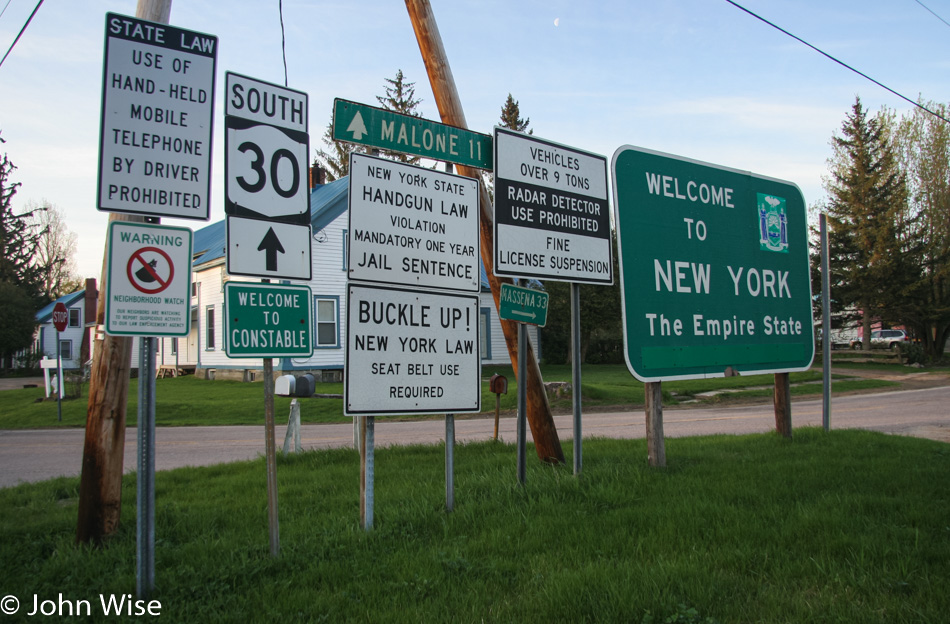
Rambling along old backroads, we are leaving the Trout River-Westville Rd and turning south on State Route 30 at the Canadian and United States border in New York. Across the border is Godmanchester, and in front of us is Constable. On the radio, we mostly find French broadcasters and a great diversity of programming – not like what we have heard further south. Not many people are living up here. There are a few farms but not much else besides the countryside and plenty of signs.
There are a lot of internal signs that impact my decisions to operate from intuition, while when physically maneuvering our world, the signs imposed by laws constrain my actions. The internal signs are pointers to dreams that help fulfill aspirations, and so it is that we are out here now, trying to decipher and make real whatever the hopes were that formed the structure of this adventure.
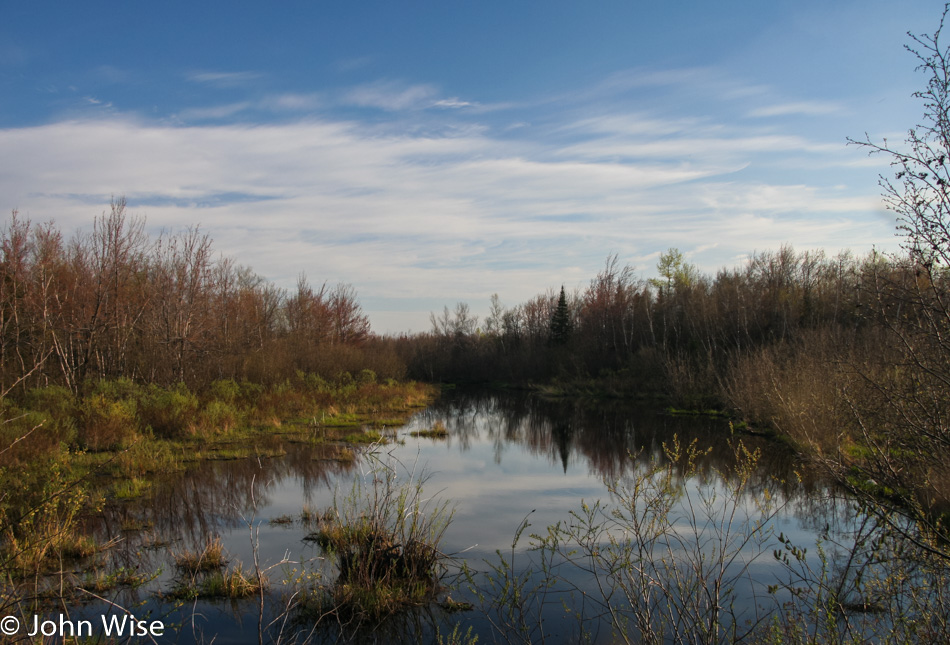
There’s so much water out here, and so much we can’t see. If we were here on a summer evening would we hear frogs, would we see fireflies, or whatever other nocturnal life living out here? Those who dwell along these roads and waterways, do they spend time learning about their environment, or is it invisible background noise no longer making an impact? We are enchanted by scenes like this and look for what fish, birds, butterflies, and plants are along the riverbank and what’s in the channel. We are only afforded the most superficial of experiences, though, as this isn’t about immersion but impressions.
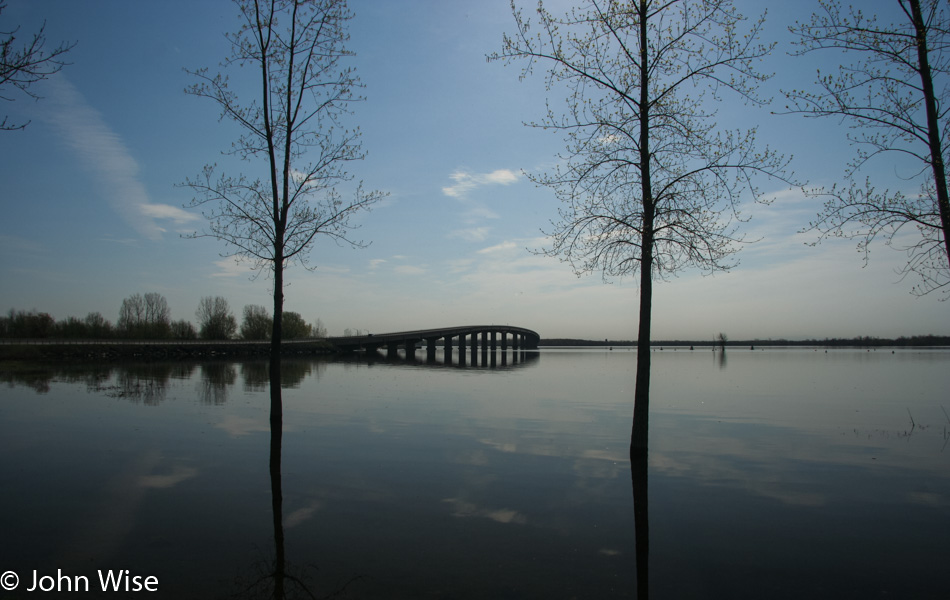
While driving just south of the Canadian border, we’ve been tuning into various radio stations along the way with the majority of them broadcasting in French. When the soundtrack to an environment is as new as the place itself, the thrill of novelty is amplified and takes us into perspectives beyond our expectations. Since our departure this morning from Massena, New York, we’ve been traveling on the Military Trail Scenic Byway.

Our hearts pull us toward North Hero here on our return to Vermont, but the desire for new experiences demands we head over the bridges toward Swanton, Vermont.

There are a few things one must see in Vermont, and farms play a large role in that.

Covered bridges made of wood are another thing on the must-see list visitors should seek out. This particular one is the Power House Covered Bridge in Johnson, Vermont.
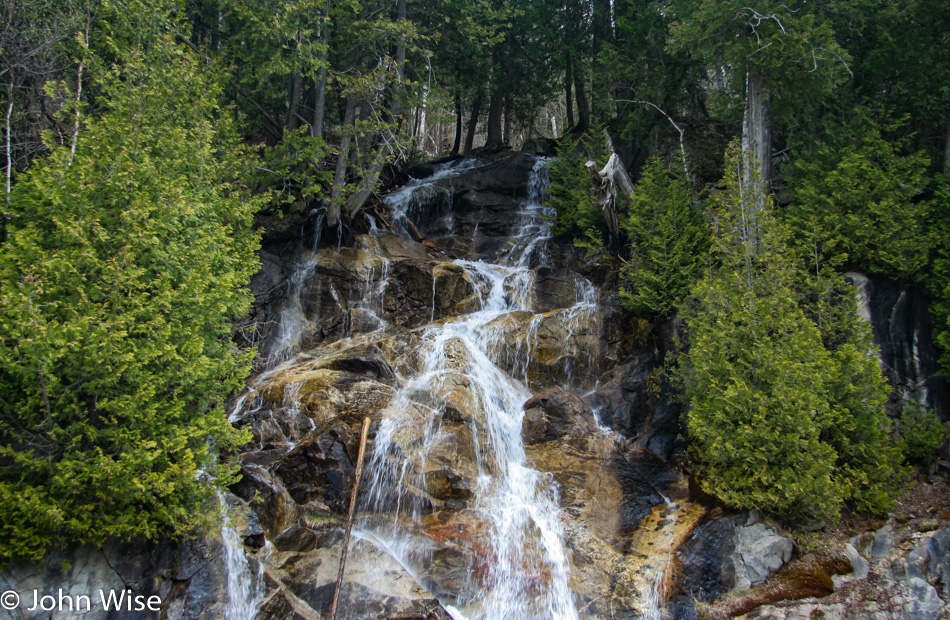
Add forests and cascades to that list; check.

Metal moose and giant metal daisies are the kind of lawn ornaments the people of Ohio could learn about, with their plastic deer decorating their front yards. Come to think about it; I wonder why the people of Arizona haven’t discovered fake enormous scorpions or javelinas for their yards? Then there are those pink flamingos down in Florida – that’s it; I want to see giant metal pink javelinas in my future.
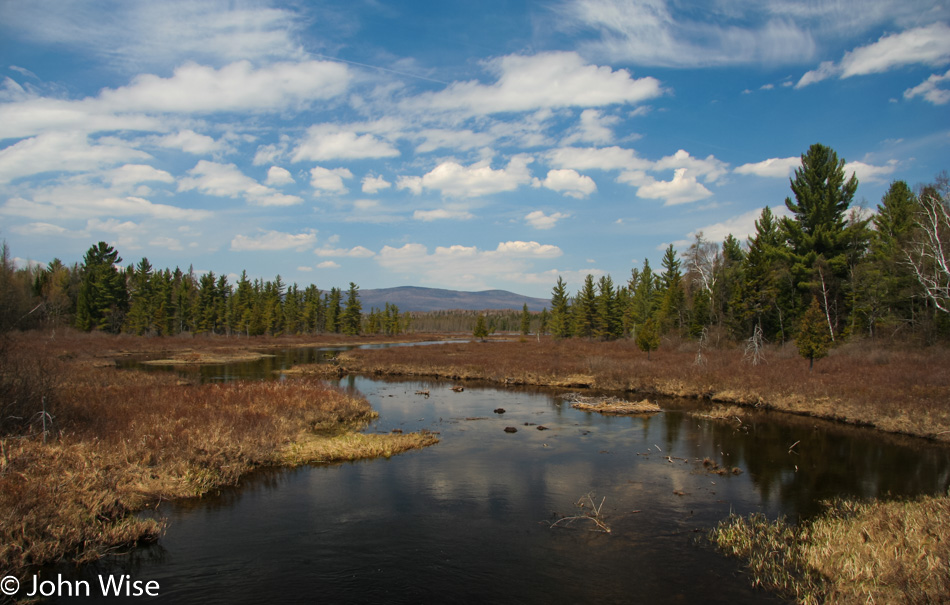
With only a bit more than five hours in Vermont, I’ll be the first to admit that it was nowhere near enough time to understand the breadth of character this state has. Our second glimpse of the place makes it even more attractive, and the hope to return for a more extensive will burn within.

Hello, New Hampshire and North Stratford! So, we know nothing more about this first town in New Hampshire than we did before we passed through. Sadly, this state will mostly be a blur. Our route will take us down the Daniel Webster Highway along the Connecticut River until we reach Groveton, where we pick up the Berlin-Groveton Highway, also known as the Woodland Heritage Trail.

Stark Covered Bridge over the Upper Ammonoosuc River in Stark, New Hampshire is as good a reason to stop to take in a sight. Have I ever shared that Caroline and I are in love with America’s scenic byways?
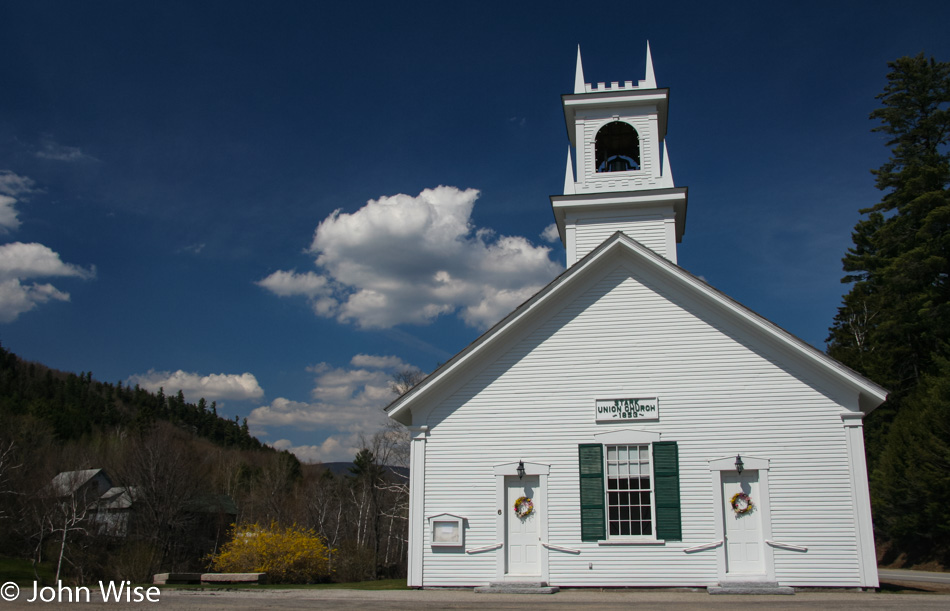
While we were in town, this old church from 1853 also caught our attention. It was built shortly before the bridge above.

And within two hours, we were about to say goodbye to the Granite State but not before we heard our first loon out here on the White Mountain Scenic Drive. I should make a note to Caroline and me that we need to come back to this corner of America sometime in June or September to better explore Vermont, New Hampshire, Massachusetts, Connecticut, and Rhode Island.

Home for the next three nights will be right here in the great state of Maine.

No loons here, but plenty of frogs to listen to here at Cupsuptic Lake on Wilson Mills Road.

How did I miss that the Wilhelm Reich Museum called Orgonon in Rangely, Maine, was along our path? Here we are, showing up well after they closed for the day, drats. Who was Wilhelm Reich you ask? Author of The Function of the Orgasm, The Murder of Christ, Listen, Little Man!, and The Mass Psychology of Fascism. Reich was also a controversial figure for his theory of Orgone, or the energy of the orgasm, and how its regulation was important for mental health. I first learned about him from William S. Burroughs back when I was a teenager in high school.

In Rangely, where we’ll be spending the night, we had an early dinner and then used the late-day sunlight to head up “Moose Alley.” Along the way, we spot about a dozen moose that look like they barely survived winter and some elk and even a beaver. Back in town, the sound of frogs and loons will soon take us off to sleep, but first, we request another 4:30 wake-up call.